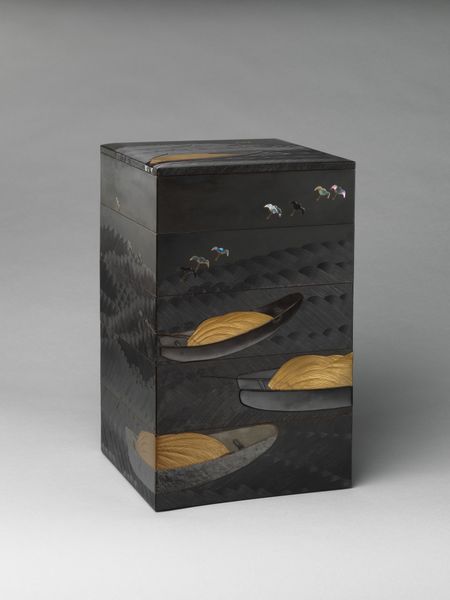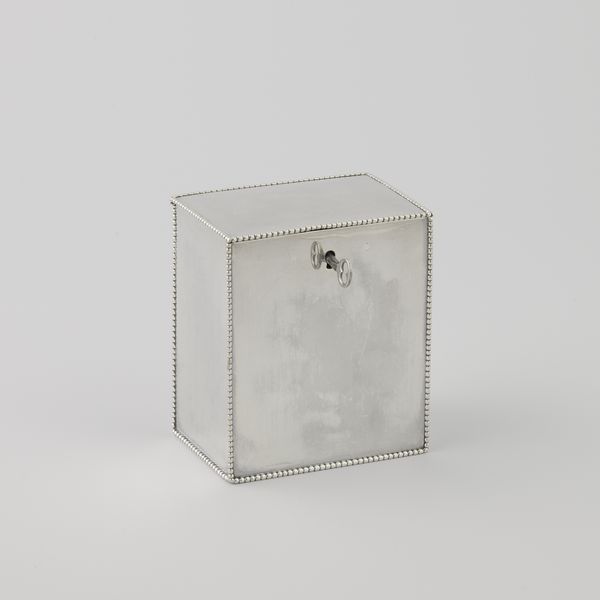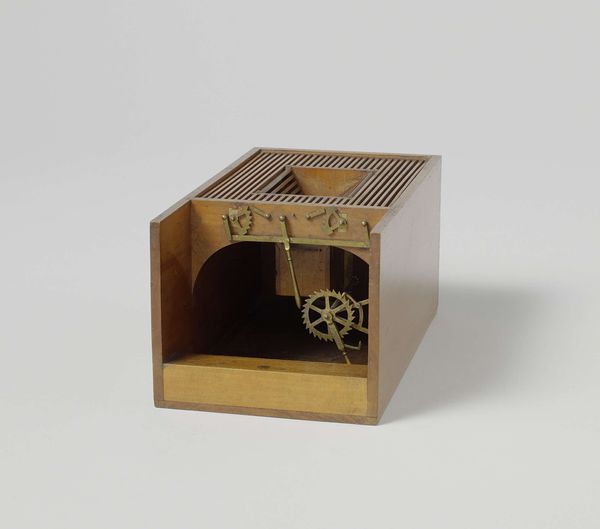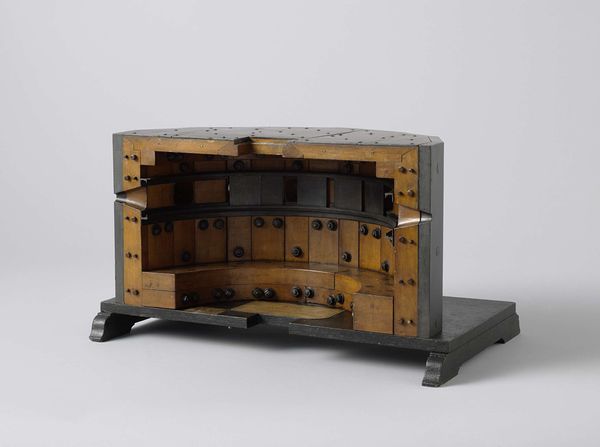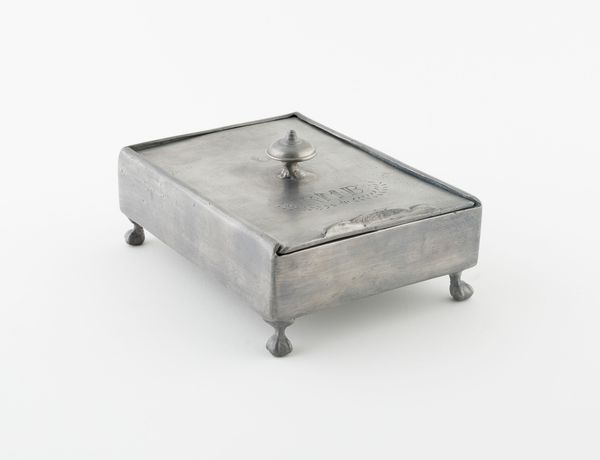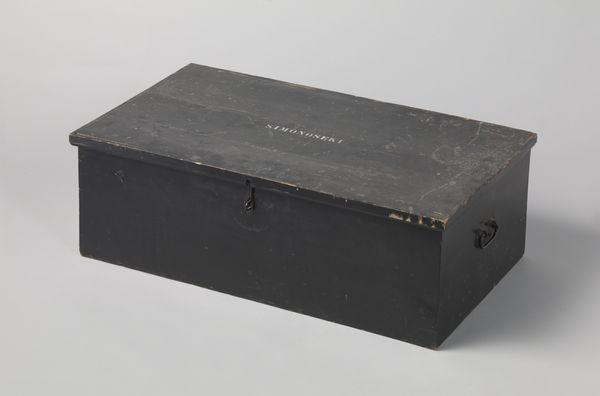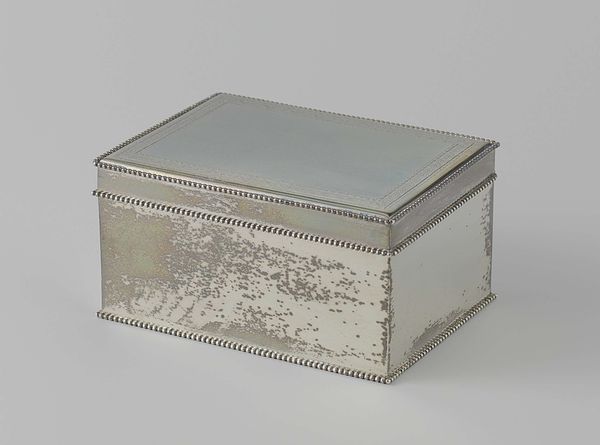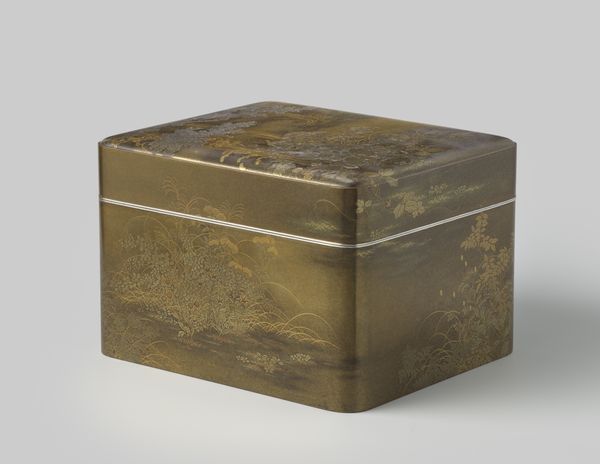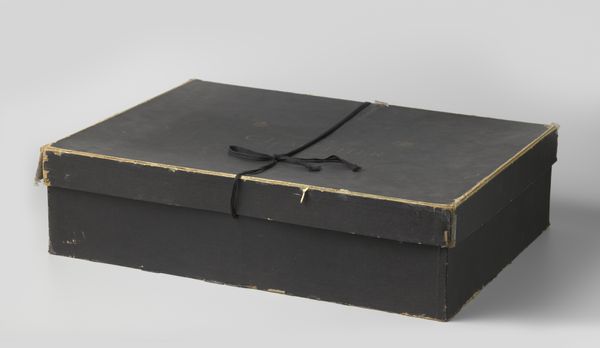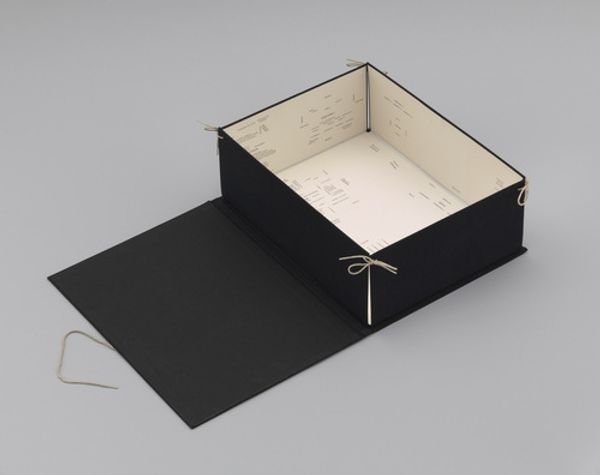
Kist, vierkant, van campechehout, gefineerd met coromandelhout en versierd met een abstract patroon met pijlen in een intarsia-techniek van parelmoer c. 1922
0:00
0:00
carving, wood
#
carving
#
abstract
#
geometric
#
wood
Dimensions: height 10.9 cm, width 18.9 cm, depth 18.9 cm
Copyright: Rijks Museum: Open Domain
Curator: Good morning. Let’s turn our attention to this intriguing box, created circa 1922. Its proper designation is: "Kist, vierkant, van campechehout, gefineerd met coromandelhout en versierd met een abstract patroon met pijlen in een intarsia-techniek van parelmoer," crafted by Albert Schulze. Editor: It’s quite striking. The abstract patterns, the sharp angles and the lustrous material—it really evokes a sense of both modernity and a kind of luxurious precision. The overall feel, despite being wood, is undeniably opulent. Curator: Precisely. Schulze's choice of campeche and coromandel woods provides a rich, dark canvas. What elevates the piece, however, is the pearl inlay work—an incredibly painstaking and laborious practice of carving the wood, and carefully inserting delicate materials that reflect light in all different directions. Editor: I'm drawn to that tension between the mass-produced aesthetic, with the repeated geometric designs, versus what I imagine was very dedicated craftsmanship of carving these materials and shaping it perfectly by hand. Were these sorts of inlaid boxes intended for functional use or decorative purposes at the time, and how might social status tie into their popularity and availability? Curator: Interesting. You’re highlighting the interplay between design and social history, but let us return to the material components, which reveal something equally interesting. Intarsia, as seen here, pushes past mere function and steps into abstract form; there are sharp deviations from standard geometric shapes which disrupt symmetry. See how those pearl arrow forms direct your gaze through multiple levels—leading your focus across the whole piece? Editor: Right. But there’s also a level of planned aesthetic strategy at work. The labor, in terms of material procurement and artistic process, must be considered, as I wonder what inspired such detail, given all those other external factors at the time it was created. Curator: It prompts thoughts on craftsmanship in an ever industrializing world, where something carefully wrought carries meaning. Editor: Absolutely. It truly bridges decorative function with a powerful statement on value and the art itself.
Comments
No comments
Be the first to comment and join the conversation on the ultimate creative platform.
